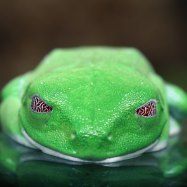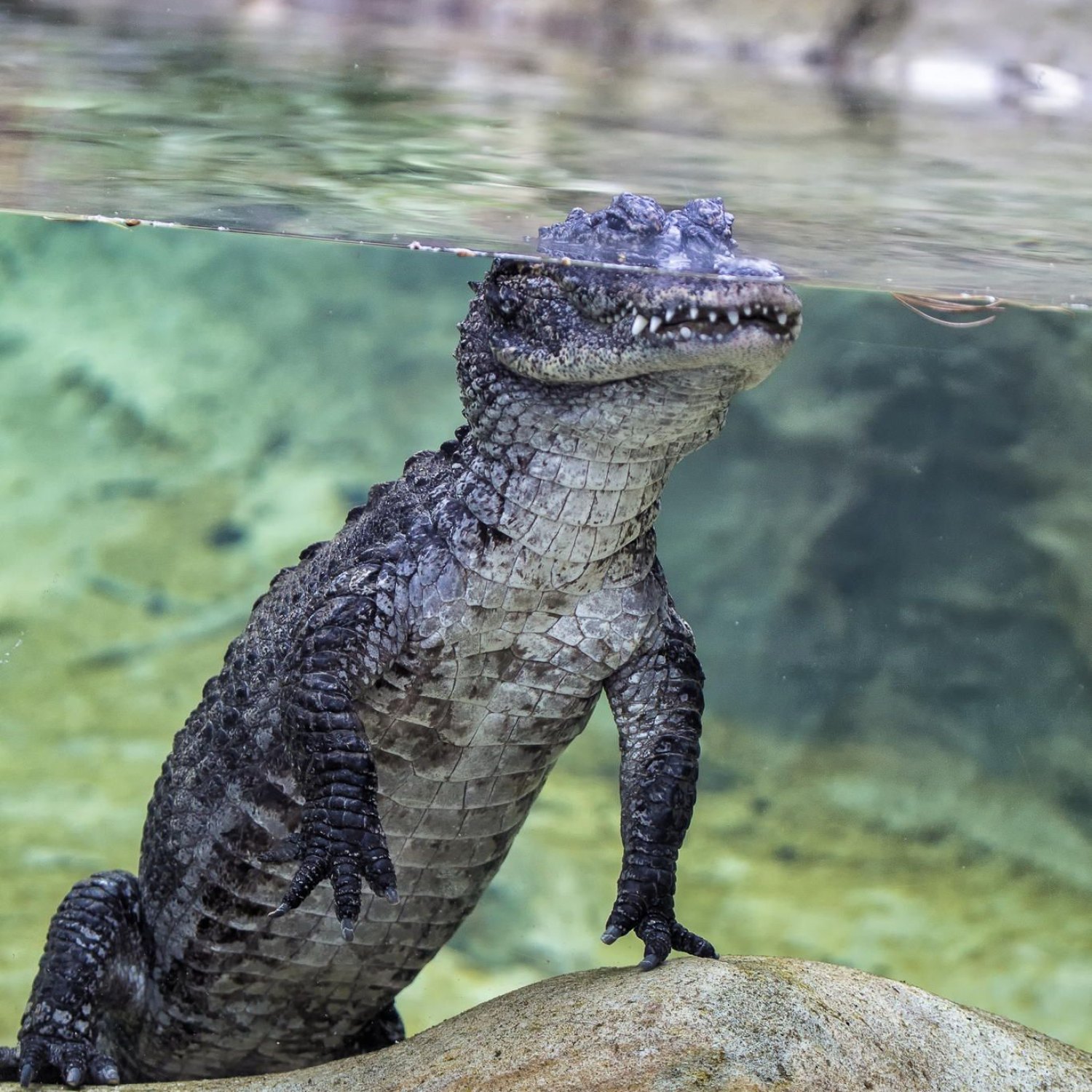
Chinese Alligator
1.5 to 2.1 meters (5 to 7 feet)
The Chinese Alligator, also known as the Yangtze Alligator, is one of the rarest crocodilian species in the world. It can grow up to 1.5 to 2.1 meters long and can be found in the Yangtze River. With its low elongate body shape, it is well adapted for swimming and hunting in the river. This species is part of the Alligatoridae family and is listed as critically endangered, making conservation efforts crucial for their survival. #ChineseAlligator #YangtzeAlligator #RareSpecies #Crocodilian #EndangeredSpecies
Animal Details Summary:
Common Name: Chinese Alligator
Kingdom: Animalia
Habitat: Freshwater
The Fascinating World of the Chinese Alligator: A Rare and Endangered Species
Deep in the heart of China, along the banks of the Yangtze River, lives a creature that has captivated researchers and conservationists alike for years – the Chinese alligator. This unique reptile, with its dark olive-brown skin and low elongate body, is not only fascinating to observe but also serves as a crucial indicator of the ecological health of its ecosystem. In this article, we will delve into the world of the Chinese alligator, exploring its physical characteristics, behavior, and the efforts being made to preserve this endangered species.The Basics: Taxonomy and Habitat
Before we dive into the specifics of the Chinese alligator, let's first understand its taxonomy and habitat Chinese Alligator. The scientific name of this reptile is Alligator sinensis, and it belongs to the Animalia kingdom and the Chordata phylum. Within the reptilian class, it falls under the Order Crocodilia, along with its fellow crocodiles and alligators. The Chinese alligator has its own unique family, the Alligatoridae, which also includes the American alligator and the caiman species.As the name suggests, the Chinese alligator is predominantly found in China, specifically in the eastern parts of the country. Its preferred habitat is freshwater, which is why it is primarily found along the banks of the Yangtze River. This river, known as the "golden waterway," provides the perfect environment for the Chinese alligator to thrive due to its rich biodiversity and abundant food sources.
Physical Characteristics
One look at the Chinese alligator, and you can see how it differs from its American and African counterparts. This reptile has a dark olive-brown skin, which is peppered with small, irregularly shaped scales. Its underbelly is lighter in color, ranging from beige to yellow, and its eyes are a striking brown Common Buzzard. It also has webbed feet, a hallmark of alligators, which helps them navigate through water with ease.In terms of size, the Chinese alligator is significantly smaller than other alligator species, measuring between 1.5 to 2.1 meters (5 to 7 feet) in length. It also has a lower and more elongated body shape, making it more streamlined for swimming and hunting in water.
Feeding and Behavior
The Chinese alligator is a carnivorous creature, and its diet primarily consists of fish, mollusks, and crustaceans. Being semiaquatic, it spends most of its time in water, preying on unsuspecting creatures that pass by. It is also a solitary animal, only coming together during the mating season.One of the most intriguing aspects of the Chinese alligator's behavior is its remarkable ability to communicate with fellow alligators. While most animals use sounds and calls to communicate, the Chinese alligator relies on touch. It has sensitive nerve endings on its jaw, which help it detect vibrations in the water. These vibrations can convey a range of messages, from the presence of prey to warning signals from other alligators.
A Dwindling Population
Despite being a fascinating and unique species, the Chinese alligator currently holds the status of an endangered species. In the 1950s, it was estimated that there were over 300,000 Chinese alligators in the wild, but due to human activities and habitat destruction, that number has significantly reduced to only a few thousand.The primary threat to the Chinese alligator is the destruction of its natural habitat. The construction of dams on the Yangtze River and the draining of wetlands have severely impacted the ecosystem in which they thrive. Furthermore, they are also hunted for their skin and body parts, which are used in traditional Chinese medicines.
Conservation Efforts
The Chinese alligator is considered a "keystone species," which means that its role in the ecosystem is crucial for maintaining the balance of other species. Therefore, its conservation is not only essential for the alligator itself, but also for the overall health of the Yangtze River and the plants and animals that depend on it.Over the past few decades, there have been significant efforts to preserve the Chinese alligator and its habitat. These include creating reserves and protected areas where the alligators can thrive without human interference. One such reserve is the Changxing Nature Reserve in China, which is home to around 200 Chinese alligators. Researchers and conservationists also continuously monitor the population and movements of the Chinese alligator to ensure its protection and prevent any further decline.
Looking to the Future
While the Chinese alligator continues to face challenges, there is also hope for its survival. In the early 2000s, researchers discovered a new population of Chinese alligators, which provided a much-needed boost to conservation efforts. Moreover, organizations and individuals around the world are raising awareness about the plight of this fascinating species, which has led to increased support and funding for conservation projects.In conclusion, the Chinese alligator is a rare and incredible creature that plays a vital role in the ecosystem of the Yangtze River. Through continued efforts and awareness, we can ensure that this unique species does not disappear from our planet. The future of the Chinese alligator rests in our hands, and it is up to us to protect and preserve it for generations to come.

Chinese Alligator
Animal Details Chinese Alligator - Scientific Name: Alligator sinensis
- Category: Animals C
- Scientific Name: Alligator sinensis
- Common Name: Chinese Alligator
- Kingdom: Animalia
- Phylum: Chordata
- Class: Reptilia
- Order: Crocodilia
- Family: Alligatoridae
- Habitat: Freshwater
- Feeding Method: Carnivorous
- Geographical Distribution: China
- Country of Origin: China
- Location: Yangtze River
- Animal Coloration: Dark olive-brown
- Body Shape: Low elongate
- Length: 1.5 to 2.1 meters (5 to 7 feet)
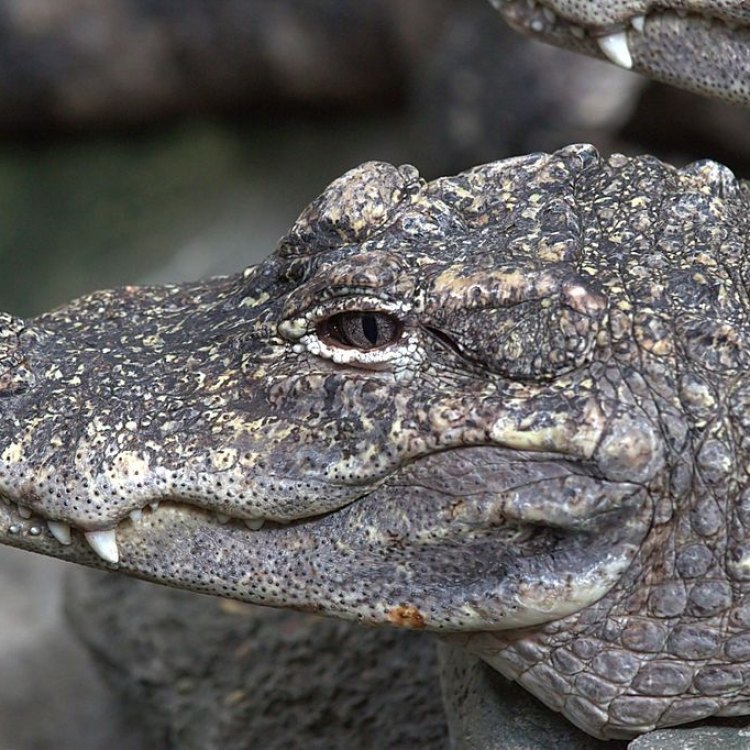
Chinese Alligator
- Adult Size: 3 to 4 meters (9 to 13 feet)
- Average Lifespan: 50 to 60 years
- Reproduction: Oviparous
- Reproductive Behavior: Mating season lasts from April to May
- Sound or Call: Bellowing vocalizations
- Migration Pattern: Non-migratory
- Social Groups: Solitary
- Behavior: Nocturnal
- Threats: Habitat loss, pollution, illegal hunting
- Conservation Status: Critically Endangered
- Impact on Ecosystem: Keystone predator
- Human Use: Hunted for their skin and as a source of food
- Distinctive Features: Short snout, sharp teeth, armored body
- Interesting Facts: Chinese Alligators are among the smallest species of alligators
- Predator: Humans
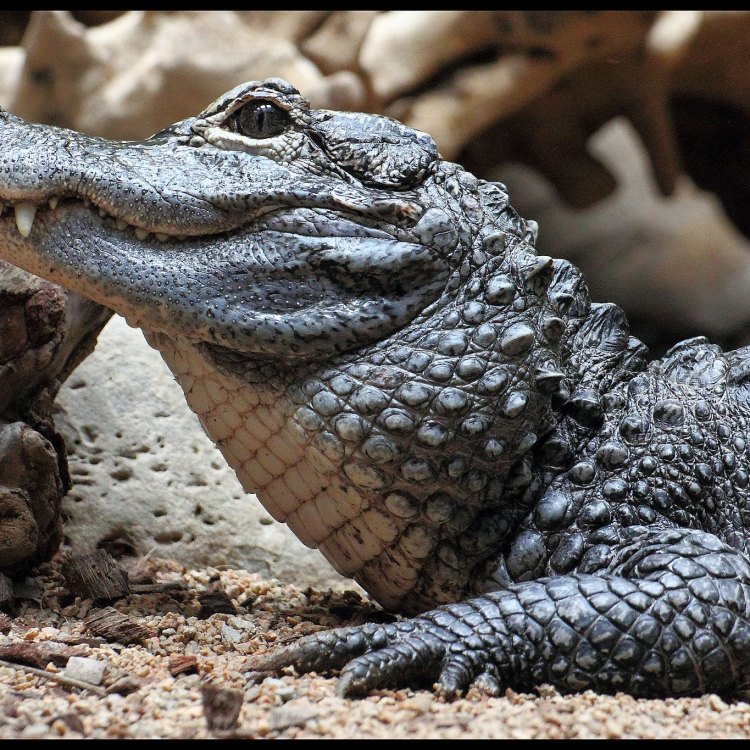
Alligator sinensis
The Elusive and Endangered Chinese Alligator: A Keystone Predator
In the vast wetlands of Eastern China, an elusive species silently hunts for food, avoiding human contact and struggling to survive. The Chinese Alligator, also known as the Yangtze Alligator, is a critically endangered species that has been pushed to the brink of extinction due to human activities and environmental changes. Despite its small size and shy nature, this species plays an important role in its ecosystem as a keystone predator, and its disappearance could have severe consequences.The Chinese Alligator, or Alligator sinensis, is one of two species of alligators in the world, the other being the larger and more well-known American Alligator PeaceOfAnimals.Com. They are native to the Yangtze River basin in China, and their population is limited to six counties in the Anhui and Zhejiang provinces. This species is believed to have existed for millions of years, but its survival is now in jeopardy.
Adult Chinese Alligators typically grow to be between 3 to 4 meters long (9 to 13 feet) and can weigh up to 45 kilograms (100 pounds). Females are usually smaller than males, and both genders have a lifespan of 50 to 60 years, making them one of the longest-living reptiles in the world. However, these impressive numbers do not reflect the harsh reality faced by these creatures in the wild.
One of the primary threats to Chinese Alligators is human activity. Their habitat has been greatly reduced due to urbanization, agricultural development, and the construction of dams and other water projects. The Yangtze River and its tributaries used to be home to this species, but now they can only be found in a few fragmented wetland areas. Pollution also poses a significant danger as industrial waste and pesticides have contaminated the waterways, making it difficult for alligators to thrive Czechoslovakian Wolfdog.
But perhaps the most significant threat to their survival is illegal hunting. Chinese Alligators are hunted for their skin, which is used in traditional Chinese medicine, and as a source of food. Despite being protected by law, poaching still occurs, and subpopulation surveys have shown a decline in numbers. In the past 50 years, the Chinese Alligator population has decreased by over 90%, and they are now classified as critically endangered on the IUCN Red List.
The reproductive behavior of Chinese Alligators adds to the difficulty of their survival. They are oviparous, meaning they lay eggs, and the mating season only lasts from April to May. Females will dig a hole in the marshy ground and lay a clutch of 20-30 eggs. The nesting sites are highly vulnerable, and disruptions or human activities can lead to high mortality rates for the eggs and hatchlings. This slow reproductive process makes it challenging for the population to recover, especially when faced with other threats.
Despite their looming extinction, Chinese Alligators remain a relatively unknown species, even in China. They are often confused with Chinese Morgan's Crocodile, a larger and more aggressive species. This confusion, along with the fact that they are solitary animals, makes them difficult to study and protect. Most of what is known about their behavior and biology comes from captive populations in zoos and conservation centers.
But while they may be elusive, Chinese Alligators are not quiet creatures. During the mating season, males can be heard bellowing to attract females with their distinctive vocalizations. They are also known to be nocturnal, preferring to hunt at night and rest during the day. Their diet consists mainly of fish, snails, crabs, and other small aquatic creatures.
One of the most distinctive features of Chinese Alligators is their appearance. Unlike their American counterparts, these alligators have a relatively short snout and fewer teeth. However, what they lack in size, they make up for in survival skills. Their body is covered in bony plates, making them less vulnerable to predation and giving them a unique, armored look. These features, combined with their sharp teeth, make them efficient hunters and formidable predators.
Another interesting fact about Chinese Alligators is that they are among the smallest species of alligators. This may be due to their limited habitat and resources, but it is also an evolutionary adaptation to their environment. The smaller size allows them to maneuver better in the dense vegetation of the wetlands and gives them an advantage in catching prey.
Speaking of predators, there is no doubt that humans are the biggest threat to Chinese Alligators. While their armored bodies may protect them from other animals, they are no match for the destructive actions of humans. But what is the impact of their potential extinction on the ecosystem?
As mentioned earlier, Chinese Alligators are considered a keystone predator. This means that their role in the ecosystem is crucial, and their disappearance can cause a ripple effect on other species. Alligators play a vital role in maintaining the balance of wetland ecosystems by controlling the population of prey species and keeping marshes and rivers healthy. Without them, there could be a rise in the number of invasive species, a decrease in water quality, and other unforeseen consequences.
The dwindling population of Chinese Alligators has led to efforts towards conservation and protection of this species. Governments, conservation organizations, and local communities are working together to rescue and preserve the remaining populations. Captive breeding programs have also been established, providing hope for the recovery of the species.
In conclusion, the Chinese Alligator is a remarkable creature that is struggling to survive in its shrinking habitat. Despite being critically endangered, they are still a little-known species, and their importance as a keystone predator is often overlooked. It is our responsibility as humans to protect and preserve these animals and their habitat. By doing so, we can ensure that this elusive alligator can continue to thrive in the wild and fulfill its crucial role in the ecosystem. Otherwise, we risk not only the loss of a unique and fascinating species but also the health of our planet.
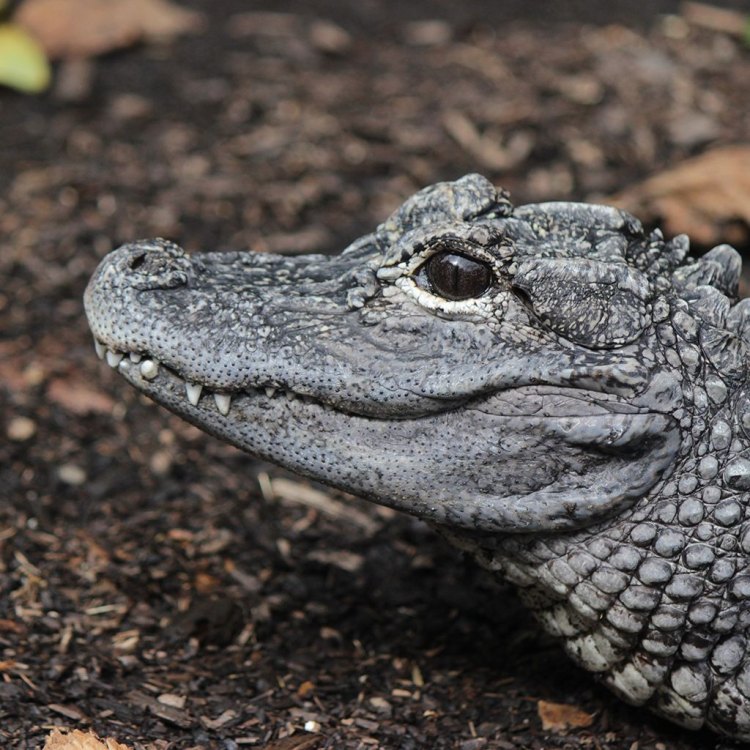
The Fascinating World of the Chinese Alligator: A Rare and Endangered Species
Disclaimer: The content provided is for informational purposes only. We cannot guarantee the accuracy of the information on this page 100%. All information provided here may change without prior notice.








